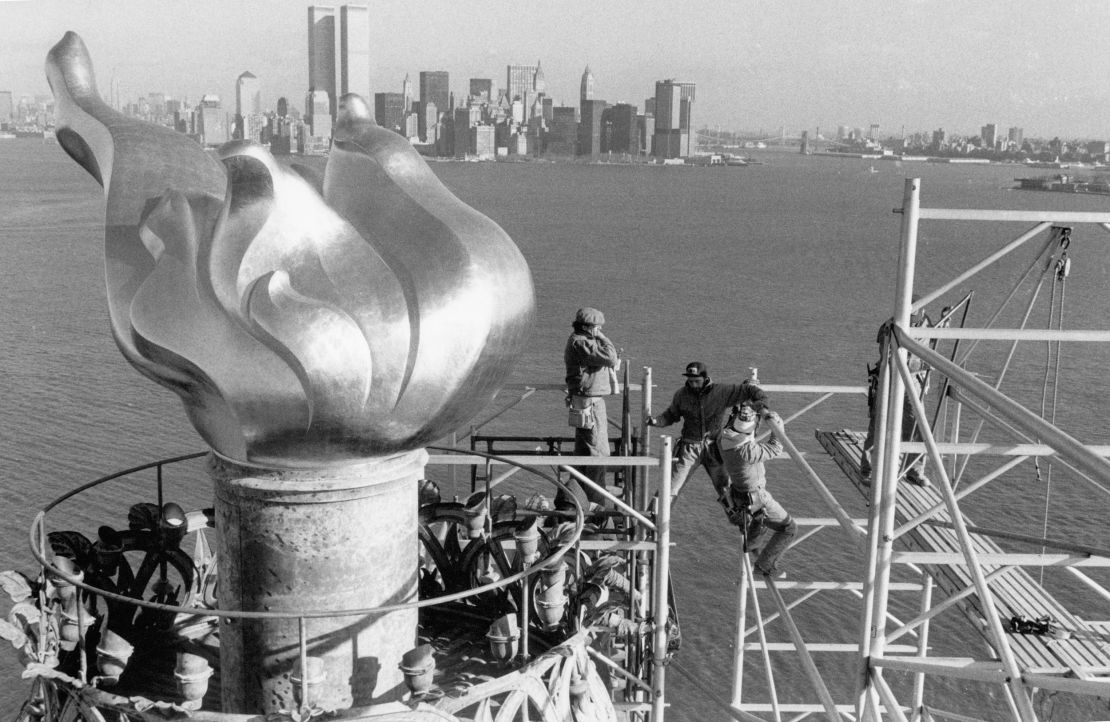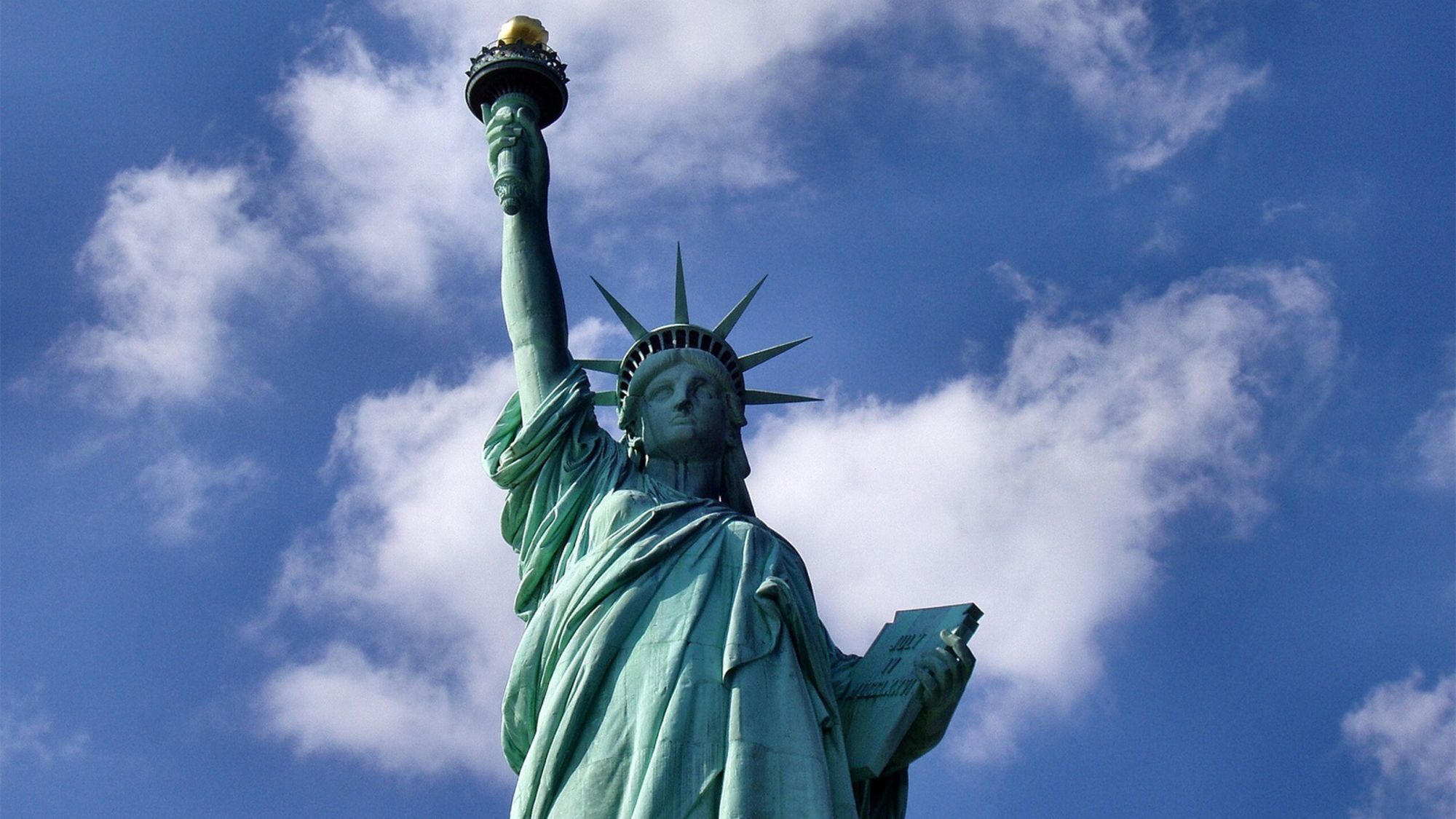Editor’s Note: Read more unknown and curious design origin stories here.
The Statue of Liberty, one of the most recognizable symbols of freedom and democracy across the world, was a gift of friendship to America from France.
Inaugurated in 1886, the statue is 305 feet tall and represents Libertas, the Roman liberty goddess, bearing a torch in her right hand and a tablet in her left hand with the date of the US Declaration of Independence. Broken shackles lay underneath the statue’s drapery, to symbolize the end of all types of servitude and oppression.
For decades, her symbolic spirit has offered hope to those entering the United States as immigrants, but her famous inscription continues to evoke passionate feelings on what the Statue of Liberty symbolizes.
The Franco-American Union
The statue’s original name was “The Statue of Liberty Enlightening the World,” and it was conceived as a gift by French historian Édouard de Laboulaye in 1865, just months after the Civil War ended, to honor the United States’ new ideals of democracy and the emancipation of the country’s slaves.
In 1871, French sculptor Frédéric-Auguste Bartholdi, who had enthusiastically supported the proposal and was picked as the artist, traveled to the United States to discuss the statue with American politicians, and to find a possible home for it. He eyed Bedloe’s Island in New York Harbor, due to the fact that all incoming vessels arriving to the city passed by it. Four years later, de Laboulaye made a formal request to then US President Ulyssess S. Grant to use Bedloe’s Island as the statue’s official site.

In order to build the monument, de Laboulaye and Bartholdi created the Franco-American Union, a partnership that would raise money for the project. The French agreed that they would fund the statue, while the Americans, in turn, would fund the pedestal.
The greatest man in America
Bartholdi began sculpting the statue in 1875, in an effort that would require almost a decade. The complex structure, made of an inner iron framework and external copper plates, was first devised by engineer Eugène-Emmanuel Viollet-le-Duc and – after his death in 1879 – by Alexandre-Gustave Eiffel, the French engineer who also built the famous tower that bears his name.
The completed statue, weighing 225 tons, was presented to American minister to France Levi P. Morton in Paris on July 4th, 1884. The following year it began its journey from Paris to New York aboard a steamer, disassembled and without the pedestal, which was completed later.
It was inaugurated on Oct. 28, 1886 with a ceremony presided by President Grover Cleveland and accompanied by a water parade of about 300 vessels. Cleveland saluted Bartholdi, the sculptor, as “the greatest man in America today.”
The statue would undergo many changes and improvements over the years. In 1907, the first elevator was installed inside it, and in 1916, it was illuminated for the first time after being converted to electric power. It would go dark for two years during World War II, due to blackout regulations. The torch was replaced entirely in the 1980s.
The Statue of Liberty was designated a National Monument in 1924 and a UNESCO World Heritage Site in 1984. In 1956, Bedloe’s Island was renamed Liberty Island by a joint resolution in Congress.

The land of dreams and Liberty
“The New Colossus,” the sonnet that’s inscribed at the entrance to the pedestal, was composed in 1883 by poet Emma Lazarus amid crowdfunding efforts to raise money for the construction of the pedestal itself, which was lagging behind the rest of the project.
The pedestal was completed three years later, allowing President Grover Cleveland to formally unveil Lady Liberty in 1886. In 1903, a bronze plaque bearing the iconic sonnet was added to it, and just like the broken shackles, it symbolizes a free society.
Over the years, waves of immigrants entering the United States through New York have seen the sculpture as a “welcome” sign to a new life filled with opportunities, which has given Lady Liberty one of her nicknames, “Mother of Exiles,” and the famous lines in “The New Colossus” a symbolic spirit.

